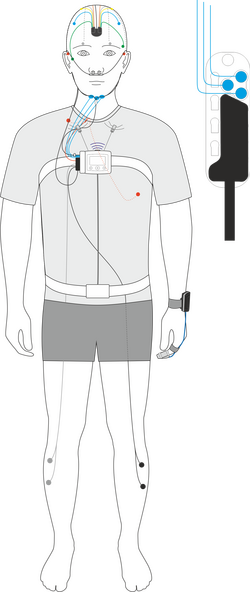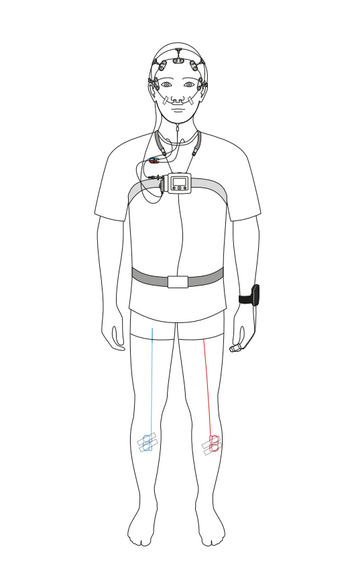The Reykjavík University Sleep Institute possesses advanced equipment, intended for measuring and studying sleep.
The equipment is as follows: 6 polysomnographies, Nox A1, from Nox Medical. 6 oxymeters, Nonin, from Nox Medical. 80 light glasses, from AYO. 80 actigraphs, Condor ActTrust, from NeuroCare. Other adequate computing equipment (laptops and tablets)

Polysomnography:
A state-of-the-art polysomnography (PSG) system Nox A1, from Nox Medical. The PSG measures brain waves, eye movements, body position, chest and abdominal movement, limb movement, breathing pattern, sweating, noise, heart rate and blood oxygen level. The system is portable and research subjects can easily drive home after the attachment of the equipment, as needed [Dae Wui Yoon et al., 2019; PunjabiNM et al., 2018]. Nox Medical is a world leading company in the field of measuring biomedical signals during sleep. Their equipment is used worldwide.

Self-applied somnopraphy:
The SAS, or self-applied somnography, is currently being validated and offers a new approach where people watch an online demonstration video of the setup and then do it themselves at home. It measures in many ways the same signal as the conventional PSG, with the main difference being a solely frontal eeg and a more detailed ecg.
Video showing the installation of a sleep measurement with a forebrain chart.
Photos, video and text (in part) obtained from Nox Medical
Actigraph:
For measuring circadian rhythm activity, physical activity and sleep length/quality for longer periods (1-2 weeks of recording at a time per subject), it is proposed to buy 80 actigraphs (brand ActTrust from TheNeuroCare Group GmbH). This equipment samples the movements and light only and gives an idea about sleep onset, waking times, sleep duration and is an adequate read-out for circadian rhythms. A typical use revolves on getting cruder data from a larger group of participants, a subset of which then undergoes a full sleep monitoring using polysomnography.
Light glasses:
Light is one of the strongest entrainments of the circadian rhythm, but disrupted rhythms are associated with several health problems, including being of paramount importance to sleep. A subset of the currently proposed experiments (and a suite of possible ones) revolves on the use of lightglasses which mimic sunlight and can, therefore, give the researcher control of ambient light. To this purpose, we propose to buy 80 light glasses (brandAYO from GogoAyo) to examine the effects of different intensity light on adjusting the circadian rhythm.
